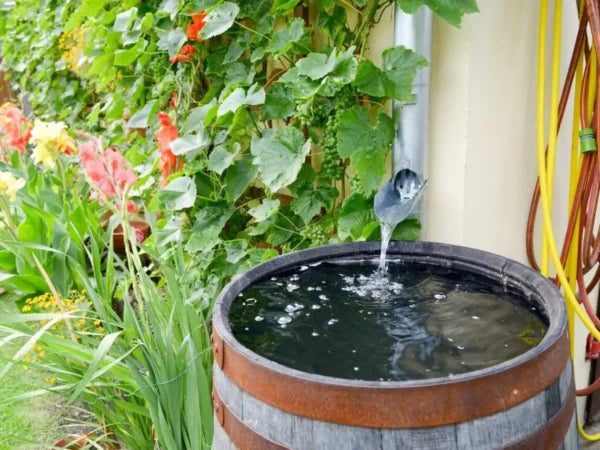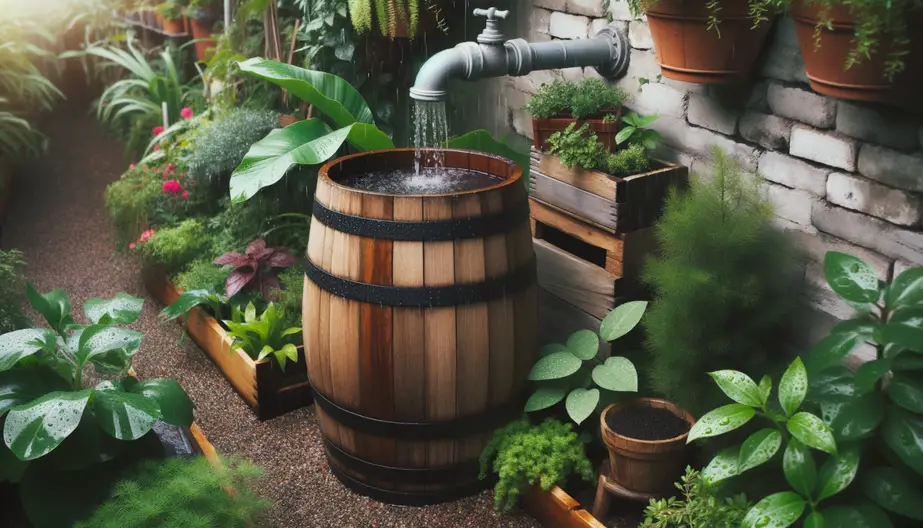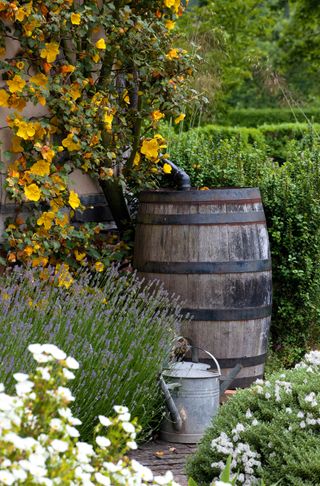
Rainwater harvesting is a sustainable system that offers gardeners the ability to collect and use rainwater for irrigation and other non-potable purposes. By adopting rainwater harvesting techniques, you can conserve water, reduce reliance on municipal supplies, and promote healthier plant growth. Here’s how you can implement this eco-friendly practice in your garden.
Understanding the Basics of Rainwater Harvesting

Rainwater harvesting involves collecting rainwater that falls on your property, typically from rooftops and paved surfaces, and storing it for later use. This practice has significant benefits, including environmental conservation, cost savings, and improved garden health. Rainwater is untreated and free from chemicals like chlorine found in tap water, making it particularly beneficial for sensitive plants such as orchids and lime-hating species like azaleas and rhododendrons, which thrive when irrigated with naturally soft rainwater[4][5].
Steps to Implement Rainwater Harvesting
1. Setting Up a Collection System

The first step in rainwater harvesting is to establish a collection system. This is most commonly achieved by installing rain barrels or larger cisterns under downspouts connected to your roof. When it rains, water flows from the roof into gutters, downspouts, and finally into these storage tanks[1][4]. Here are some collection methods:
Rain Barrels: These are simple and cost-effective solutions typically made from durable plastic or wood, with a spigot attached for easy access to the water stored inside. They generally hold around 50 to 100 gallons and are suitable for small garden areas[1][3].
Larger Storage Tanks: For more extensive gardening needs, consider installing a dry or wet system. A dry system consists of underground pipes that funnel rainwater directly to larger holding tanks, reducing contamination risks[1][5]. A wet system allows rain to flow from the roof directly to a shallow basin or storage tank[3].
2. Ensuring Water Quality
To ensure the collected rainwater is clean, a filtration system is vital. Simple mesh filters can capture leaves, twigs, and other debris before the water enters storage tanks. More advanced systems may use vortex technology, which can filter finer particles and maintain water quality by preventing sediment disturbance in tanks[1][4][6]. Installing first flush diverters can also help to exclude the initial runoff—which is often the most contaminated—before large volumes of rainwater are collected[3][5].
3. Integrating with Your Irrigation System
Once you have an effective collection system in place, integrate it with your irrigation setup. Using soaker hoses or drip irrigation systems connected to rain barrels ensures that water is delivered directly to the plant roots, minimizing evaporation and runoff. This targeted watering is especially effective as it helps maintain soil moisture without wastage[1][3][6].
4. Calculating Storage Needs
Determining how much water you need for your garden is crucial. Analyze your garden's size, the types of plants you are growing, their individual water needs, and local rainfall patterns. This information helps in calculating storage capacity and deciding whether you need a single large irrigating tank or multiple smaller tanks strategically placed around your garden[1][3].
Benefits of Rainwater Harvesting
Environmental Impact

Through rainwater harvesting, you can significantly mitigate stormwater runoff, which can contribute to soil erosion and pollution of local waterways. By capturing rainwater, you are not only using a free resource but also assisting in maintaining local ecosystems[2][5]. This practice can create mini-reservoirs that contribute to sustaining soil health and reducing the need for chemical fertilizers, which are often washed away in excess rain[4][5].
Economic Advantages

Financially, rainwater harvesting reduces dependence on municipal water, leading to lower water bills. Though costs are associated with installing collection and filtration systems, the long-term savings on water use can be substantial. In addition to savings, some regions may offer rebates or incentives for setting up rainwater harvesting systems, enhancing their financial viability[1][5][6].
Practical Uses

Beyond irrigation, collected rainwater can be useful for diverse activities in the garden and household. Homeowners can utilize rainwater for washing cars, cleaning outdoor furniture, flushing toilets, or other non-potable uses. This versatility increases the overall value of the rainwater harvesting system within the lifestyle of the household[2][4][6].
Conclusion
Incorporating rainwater harvesting into your gardening practices provides a sustainable method for resource management while yielding numerous benefits. Whether through simple rain barrels or more complex systems, gardeners can effectively utilize collected rainwater for irrigation and beyond. By adopting these methods, you contribute positively to the environment, make economical choices, and foster a healthier garden ecosystem.
Get more accurate answers with Super Pandi, upload files, personalized discovery feed, save searches and contribute to the PandiPedia.
Let's look at alternatives:
- Modify the query.
- Start a new thread.
- Remove sources (if manually added).